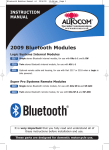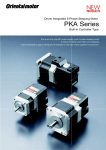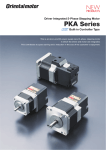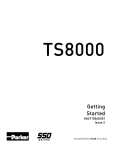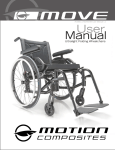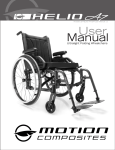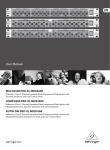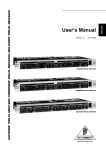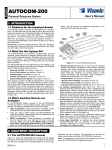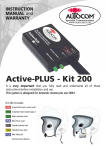Download Bike to Bike Manual
Transcript
WARRANTY If your supplier has not given advice or demonstration on how to set up or use our products, please check with them before sending any goods back for warranty. All Autocom products are warranted for a period of 12 months from the date of original purchase, to the original purchaser, from an authorised Autocom retailer. This warranty covers faulty materials or workmanship, subject to the goods being used only as stated, and only for the purpose as described in the instruction manuals. No manufacturer's warranty applies to the goods where they are used for any other purpose or in any other way than is explained in the instructions. Nor where the goods have been subjected to misuse, neglect or accidental damage, or used with any other vendor’s products, including incorrect mechanical or electrical installation, or where the goods have been repaired, modified or altered, without the manufacturer’s written authorisation. The manufacturer's warranty is limited to the goods being returned pre paid to the manufacturer's factory, with the original packaging and the original proof of purchase date. The goods must be intact for our examination. Where goods are accepted by the manufacturer, under the terms of the warranty, they will be repaired free of charge or replaced (at the option of the manufacturer). Where the goods are returned as faulty and are found not to be, a charge will be payable to cover costs of inspection, testing, packing and return postage. This warranty does not cover any consumable items such as batteries, replaceable hygiene foam coverings for speakers and microphones, or any other items that are described within the instruction manuals as being a consumable. INSTRUCTION MANUAL Bike-to-Bike Manual Non expandable, portable, bike-to-bike, push-to-talk system Includes headset instructions. Radio not included in kits. Kit 21-7-TK 2116 2059 2384 Complete noise cancelling stereo headset Kenwood twin pin radio interface lead Handlebar push-to-talk (Kit requires radio) Kit 23-7-M 2116 2067 2384 Complete noise cancelling stereo headset Motorola single pin radio interface lead Handlebar push-to-talk (Kit requires radio) The manufacturer's warranty does not affect your statutory rights. Kit 24-7-G7 Autocom Products Limited Unit 4, Tachbrook Link, Tachbrook Park Drive, Warwick CV34 6RH England. Telephone: Fax: Email: Website: +44 (0)1926 431249 +44 (0)1926 431250 [email protected] www.autocom.co.uk 2116 2063 2384 Complete noise cancelling stereo headset Midland G7 twin pin radio interface lead Handlebar push-to-talk (Kit requires radio) For details of Autocom’s International distributors and support network, please see our website. Please contact your supplier or Autocom for any further help or information. We service what we make It is very important that you fully read and understand all of these instructions before installation and use. UK Manufacturer and Distributor This system is designed for domestic motorcycle use. CONTENTS Page 2 Contents, installation and the use of interface parts and handlebar push-to-talk. 3 How to get the best out of your system. 4 Headset description of main loom and speakers, plus notes and tips. 5 Headset boom microphone. 6 Microphone loud spot 7 Illustrations of various helmet installations. 8 Warranty. BASIC PRINCIPLES HOW MOST HELMETS ARE ASSEMBLED One Part Inner Helmet Design View from underside of one part type helmet It is very important to properly set up and use these products as designed. Please do not make any modifications or try to use these products with any non-recommended products or in any other way than described. DO NOT CUT OR MODIFY YOUR HELMETS. INSTALLING YOUR SYSTEM Headset to radio interface leads - Parts 2059, 2063 and 2067 The interface lead has a black socket, a blue plug and a moulded single or twin pin jack plug that interfaces into a specific bike-to-bike radio. The blue plug connects to the blue socket on Part 2384. The black socket connects to the Autocom headset. Handlebar push-to-talk - Part 2384 Attach the P-T-T switch unit to the extreme right of the handlebar grip using the cable-ties provided. Crossing over the cable-tie will aid holding the unit in place (as per photograph). When you route the cables along the frame of the bike, care should be taken to ensure that the cable does not interfere with any moving parts, i.e. the steering. Ensure that the cable is not in a place where it may be crushed or severed by a panel or the seat. Avoid HT (sparkplug) leads. For best results, you may find it better to route the cable over the airbox, rather than around the airbox and tank area, avoiding HT coils etc. Peel back tape and lining, slide speaker inside pushing it right up to the strap hole Remove straps and lift out complete Boom microphone assembly The fabric is either taped or elasticated over the polystyrene and so it is easy to install the speakers behind the lining. Note that the wire should come out of the speaker towards the back of the helmet. Before replacing the cheek pad, tape the boom and the headset loom to the outer side of the polystyrene. When the cheek pad is fitted back into the helmet, it will secure the boom and loom inside the helmet. Do not modify the helmet. Return assembly as removed Tape to hold in place Three Part Inner Helmet Design View from underside of three part type helmet USING YOUR SYSTEM Radio Operation Please refer to your radio instructions for setting up and use. Ensure that the other bike or bikes are set to the same frequency/tone as your system. It is usually best to try this before you install the system. Ready To Go With the system set-up and attached to your body/tank bag, wearing a helmet with the headset installed, connect the blue socket from the system to the blue plug and switch on the radio prior to connecting to your headset as some radios emit a loud beep. Connect the black socket to the headset and set the radio volume to a desired level, see how to get the best section on page 3. In order to transmit, press and hold the red button on the P-T-T switch unit, speak into your microphone and your speech will now be transmitted. When you release the button your radio will revert back to standby. When your radio receives a signal transmitted from another system it will automatically go into receive mode and the speech will be heard through your headset. It is important not to speak at the same time as the other person transmitting. 2 Remove straps and lift out each cheek pad individually The fabric is either taped or elasticated over the polystyrene and so it is easy to install the speakers behind the lining. Note that the wire should come out of the speaker facing the back of the helmet. Boom microphone assembly Before replacing the cheek pads, tape the boom and the headset loom to the outer shell or the back side of the cheek pad. When the cheek pad is fitted back into the helmet, it will secure the boom and loom inside the helmet. Return assembly as removed Do not modify the helmet. 7 Tape between cheek pad and outer shell UNDERSTANDING HEADSET INSTALLATIONS HOW TO GET THE BEST OUT OF YOUR SYSTEM There are far too many different helmets to be able to fully describe every possible installation and so these instructions are designed as a basic guide only. Please see your local Autocom dealer or our website www.autocom.co.uk for more detailed specific helmet installations. When first setting up the radio, set the volume to a low level and ask someone to talk to you using a similar radio (set to the same frequency and tone). Adjust the volume to the desired level. To compensate for additional helmet noise at higher speeds you may need to increase the volume slightly over the level set whilst stationary. There are three main types of full face helmet design, one is a one part chin and cheek pad design, per the illustration shown on page 7, another is a three part chin/cheek pad design per the illustration shown on page 7 and the third type is an open recess area within the helmet’s inner shell itself. Most full face helmets do not have the cheek pads glued in and are just a compression fit, which makes them much easier to remove (although some are quite tight). Put the helmet on and work out exactly where the centre of each ear hole is relative to the straps or any seams etc. in the lining, and also while doing this try to find and mark the exact location of the centre of your lips inside the chin pad with the helmet sat in its natural position. When you have established these positions within the helmet you are then ready to start the headset installation/s Decide which side of the helmet you would prefer the lead to hang from and then release that side’s check pad so as to allow you fit the boom and main speaker harness behind it, such that the boom comes up from behind the check pad and into the visor area, so that it can be bent down (from between the outer shell and check pad) in front of your mouth, per the illustrations. If required, tape the boom and also the main harness down lead to the back of the cheek pad or preferably to the inside of the outer shell of the helmet. Radio Discipline should be observed in order to have trouble-free communication. If you finish your transmission with ‘OVER’, that will tell the other person/people that you have finished talking. You must then release the P-T-T button to allow the radio to go back to standby mode. After each transmission A TWO SECOND pause should be observed to allow the radios to both go on to standby mode. Performance and range is dependent on antenna location, laying the radio on its back or side so the antenna is horizontal may reduce range and performance. The system is capable of giving high performance once set-up properly to suit you and your bike. No further adjustments should be needed once set up correctly. To maintain performance only an authorised Autocom dealer should service any damaged or worn parts. DO NOT MAKE ANY ADJUSTMENTS WHILST RIDING YOUR MOTORCYCLE. Most helmets have pockets (indentations) in the lining by your ears, which let your ears fold back after they are folded over while putting the helmet on. Sometimes the fabric covering these pockets is glued back to the cheek pad forming a visible pocket, and other times the fabric is just stretched over the foam pocket and is not glued back. If the helmet has deep pockets and the fabric is glued back you may need to fit padding behind the speakers (like our optional foam speaker pads, which are 6mm (1⁄4”) or 12mm (1⁄2”), these foam speaker pads have velcro fitted so that you can velcro the speakers to them. If the fabric is not glued back forming a visible pocket then it is easiest to just velcro the speakers on top of the fabric which can often work quite well in some helmets, but is more likely to cause your ears to fold over when putting the helmet on and so most people prefer a more professional installation where the speakers are set behind the fabric but on top of the foam/polystyrene behind. If you have time and can install the speakers behind the fabric like this it makes for a much more professional semi permanent fitment which is normally much more comfortable and this is how we would normally try to install the headset/s for you if you brought them to us. In order to be able to place the speakers behind the fabric you normally need to remove the cheek pads from the helmet. Carefully remove the cheek pads to reveal the back where the fabric is either glued back or taped back to the polystyrene. Carefully peel the fabric back just enough to slide the speakers into place (normally about level or just below the level of the hole for the strap and just behind the strap). Try to copy the illustrations on page 7. Avoid speaker Centre of speaker near top of ear Centre of speaker Note that wire normally comes out towards back Centre of ear hole Typical example of a; non expandable, rider only, portable, push-to-talk, bike-to-bike system. The bike-to-bike system is powered via the radio’s battery. 6 3 HEADSET INSTALLATION The Autocom helmet headset that is designed for the bike-to-bike kits come in two parts 1 Main headset loom with built-in speakers (Part 2083) 2 Plug-in boom microphone (Part 2074) . You will notice that moving the speakers just 6mm (1⁄4”) away from the ears or out of alignment can easily halve the volume and reduce the sound quality by letting in considerable external background noise, which will spoil the full potential of sound quality and performance, especially at higher speeds when out on the bike and the helmet noise becomes far more powerful. Correct speaker positioning is therefore essential and you will hear this during this test. It is also beneficial to speak through the system so that you get a measure for the speech quality and level when the speaker are correctly positioned, but in order to do this you first need to find, understand and use the microphone loud spot. MICROPHONE LOUD SPOT While speaking into the beige side of the microphone gently move it about while just touching your lips and project your voice through it, positively as if to someone 15 feet away (5 metres). You will discover a LOUD SPOT which produces the maximum sound level. Note; how just a few millimetres (1⁄8”) movement can greatly affect the level of speech. These headsets are not designed to work with 1⁄2 helmets (Chip style) There are too many different helmets to be able to fully describe every possible installation and so these instructions are designed as a basic guide. Please note that helmets with straps that go directly over your ears do not lend themselves for a good headset installation because the speakers have to sit on top or behind the straps. This can make them uncomfortable or reduce sound quality. Some helmets do not lend themselves to be installed and may require alternative methods, so please take some time to consider these basic principles and your helmet design before installation. If you are unsure then please contact your supplier or Autocom. If your system is not performing as we claim, it is almost certainly due to incorrect installation and/or use. Main headset loom (Part 2083) This is a twin speaker, stereo headset loom with a short down lead fitted with our 7-pin din plug, for connecting to our systems. It has a small red socket for plugging in a choice of boom microphones. Before installing your headset you must first listen to it by plugging it into your system, then while holding the speakers directly over your ears, get someone to speak to you through the system. Doing this is very important to help you to understand what to expect when the speakers are positioned correctly. Moving the speaker’s just 5mm (1⁄4") away from the ears, or out of alignment can easily halve the volume and/or reduce the bass, especially when out on the bike when the powerful helmet noise can overwhelm the speaker sound. Correct speaker positioning is essential and you will hear this during this test. Use earplugs during this test if you intend to use them out on the bike, bearing in mind that over attenuating earplugs will impair speaker sound. If you do not use the loud spot correctly the level of your voice will be greatly reduced and so other users will struggle to hear you at high speeds, especially when using high attenuation earplugs. It is therefore essential that you learn about and use this important loud spot as the system is tuned to it. You should not turn the volume controls up to compensate for not using this loud spot correctly as it will amplify more noise through the system than if you use the loud spot properly and turn the volume down. Listen to speech carefully and try to remember the audio levels, because after installation in your helmet/s you need to assess if the sound level and quality are as good as before, because if not you need to fine tune the speaker and/or microphone positioning until it is. Please use the same radio through the system and same level of exterior noise during both pre-installation and after installation tests. Top Tips This may seem a strange way of evaluating and setting up the system but it really works and although your first helmet may take a little longer you will get it right and then all further headset installations should be much easier and quicker due to getting through this important learning curve. Do both the pre-installation test and the final test after helmet installation without earplugs so that you can hear the vast difference it makes in having your microphone and speakers positioned correctly. If you try this while using earplugs they will disguise much of what you are trying to hear, understand and achieve. Avoid pressure directly to the front and back covers of the microphones as this could cause damage. The microphone is floating in an acoustically dampening material to help prevent any helmet vibration being transmitted through the boom to the microphone as part of the noise cancelling measures. To move or adjust the microphone please hold it by the outer edges or rubber neck, making sure that the beige side of the fabric sits flat against and central to your lips. You must speak into the beige side of the microphone Please study the helmet illustrations to get the general idea for installing the headset into your helmet. Also note the illustrations on pages 5 and 6, which show correct speaker and microphone positioning. If required, tape the rubber joint and/or boom to the outer shell or inner lining so that they are secure. Position the speakers for maximum comfort and performance, then tuck the speaker wires into or behind the lining. The small red connector is for plugging in one of our boom microphones. You may find that you need to reposition the speakers, about once a year, due to slight movement that can happen when taking the helmet on and off your head. The microphone must be just touching the lips Top tips You may need to fine-tune the speakers positioning several times before finding the optimum position for comfort and performance. Start with the speaker’s low, so as to avoid pressure to the top of the ear and slowly move them up until you find the optimum position. Try to position the speakers behind the helmet fabric if possible (on top of the polystyrene). Pack the speakers out to your ears with foam if required. A slight angle out towards the top edge of the speakers (as shown on page 6) can help with comfort and performance. Normally the speaker wire will come out facing the back of the helmet. 4 5




